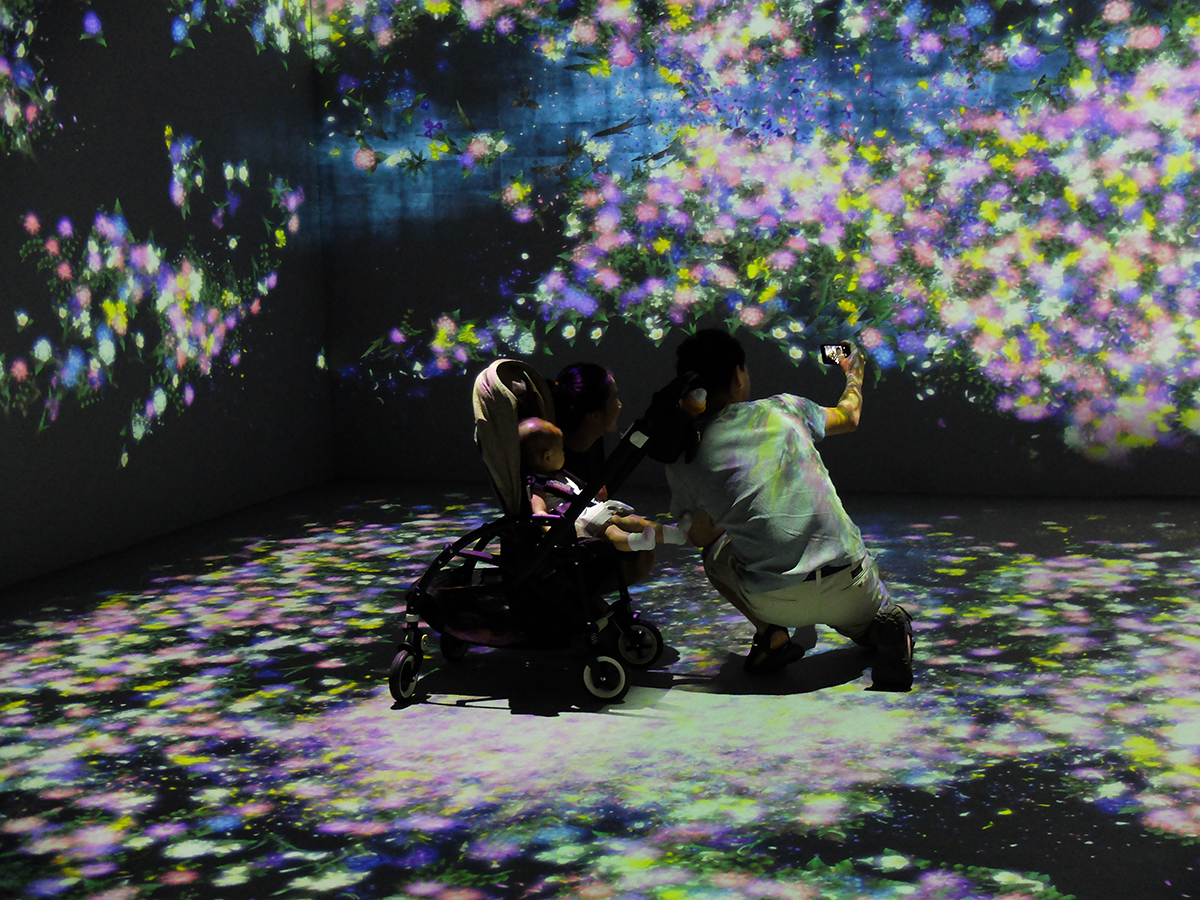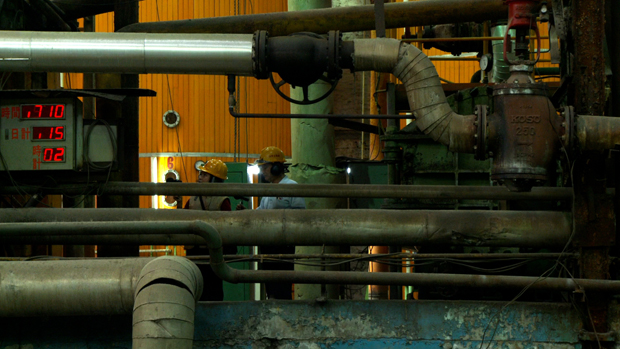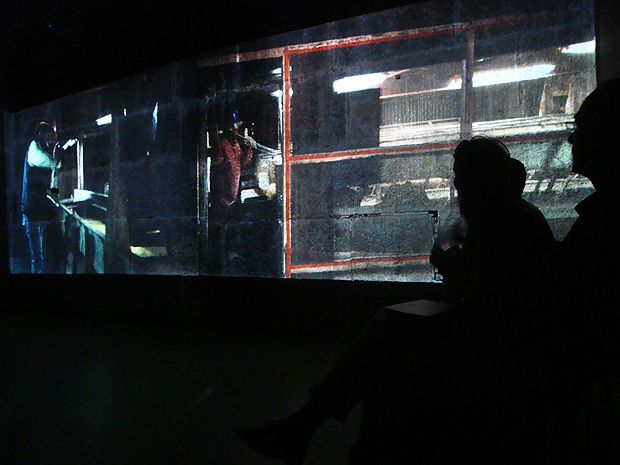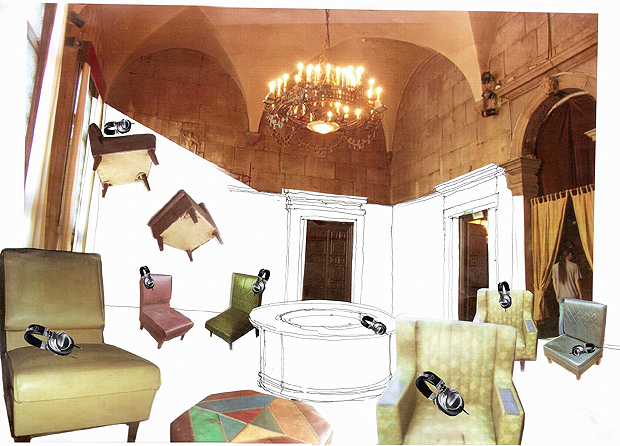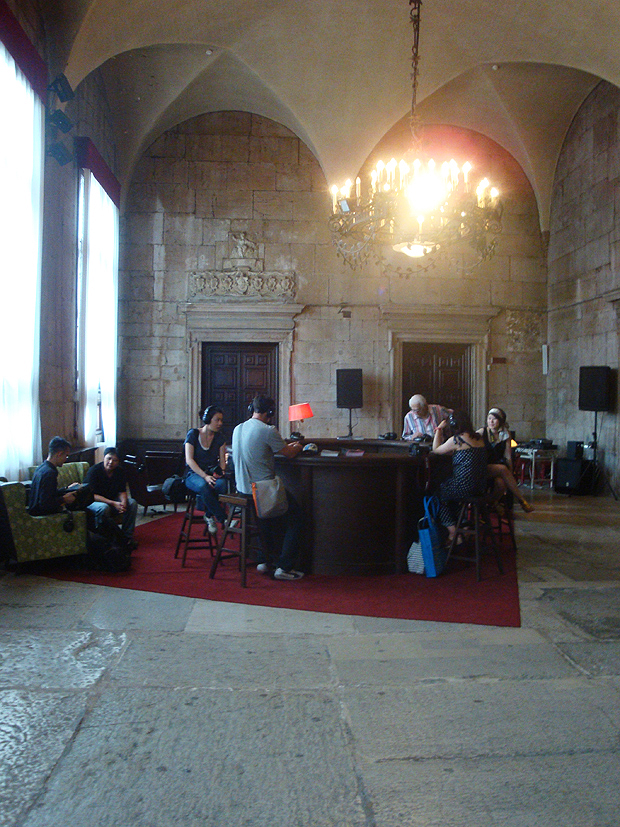Flowers & People
A young family enjoys the digital installation 'Flowers and People cannot be controlled but Live Together' by teamLab, a group of Japanese artists.
A young family enjoys the immersive digital installation 'Flowers and People cannot be controlled but Live Together.' It was part of the 'Art in Motion' series during Singapore art week. I noticed more than 8 massive projectors used to create the space. The flowers and petals grow, wither and die. As you move, the petals try to grow around you along with a tinkling almost fairy-like sound. Overall a beautiful, almost meditative experience.
Installation Sketches
Worked on some collaborative concepts with Ankit Shekhawat who is the head of the Emerging Media lab at Moonraft in Bangalore. We pitched these ideas to an upcoming event in Bangalore. Conceptualizing these installations is a really fun process, especially when budget is not a constraint. Quite proud of these ideas, since we went crazy dreaming up robot drones to do our bidding.
Worked on some collaborative concepts with Ankit Shekhawat who is the head of the Emerging Media lab at Moonraft in Bangalore. We pitched these ideas to an upcoming event in Bangalore. Conceptualizing these installations is a really fun process, especially when budget is not a constraint. Quite proud of these sketches, since we went crazy dreaming up robot drones to do our bidding.
Hoping to get a chance [funding] to build this stuff one day.
Vikhroli Skin - Prep
My most recent work will be displayed at this event sponsored by Godrej Labs on the 14th of Dec. It is going to be 200 thousand square feet of art, performances and culture, so don't miss out if you are in Mumbai.
My most recent work will be displayed at this event sponsored by Godrej Labs on the 14th of Dec. It is going to be 200 thousand square feet of art, performances and culture, so don't miss out if you are in Mumbai. The space is an abandoned Godrej factory which will be demolished soon after the art event. The factory will be moved elsewhere. It is deeply relevant to the story of Mumbai and how it has grown into post-industrialization. Here are some images of the space, once the setup starts I will do my best to share photographs of the buildup.
The plan is create an interactive installation using projections, the audience and city images. It is going to be a real challenge setting up an installation outdoors, in the day time, where electricity is coming in from generators. Limited electricity means that planning and testing the installation in another location is crucial.
Out of Sight
With an unused underground car park as its gallery walls, Out of Sight investigates the resilience and flexibility of art, and the need for its development with supporting communities in unorthodox circumstances: an appreciation for the otherwise overlooked in the chosen location compliments the political provocation of the role of the outsider in society and rebellion against industry precepts.
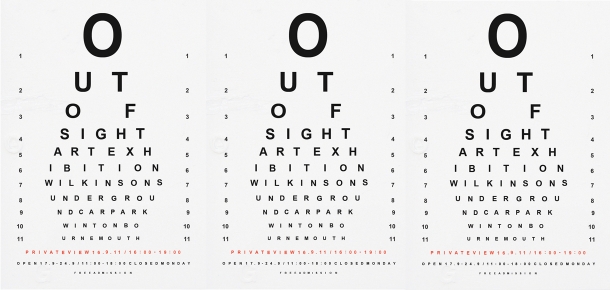 The exhibition Out of Sight is from 17th to 24th of September from 11am to 6pm and will showcase a wide variety of artwork from multimedia installations to sculpture and drawing.
The exhibition Out of Sight is from 17th to 24th of September from 11am to 6pm and will showcase a wide variety of artwork from multimedia installations to sculpture and drawing.
With an unused underground car park as its gallery walls, Out of Sight investigates the resilience and flexibility of art, and the need for its development with supporting communities in unorthodox circumstances: an appreciation for the otherwise overlooked in the chosen location compliments the political provocation of the role of the outsider in society and rebellion against industry precepts.
Below is a video by Michael Compton of day two of the massive clean-up of the dark, unused space.
Nico Vascellari
The artist and musician creates sound and light installations that center around themes of nature, spaces, and spiritualism. His work at the Biennale interested me because of his use of shadow, especially the way the audience's shadows are incorporated into projected slides of his collage work. The experience is amplified by a loud sound every time the slide physically changes since an old world projector is used.
Nico Vascellari. Untitled Horizons, 2011. Collage on Paper 120 slides, three slide projectors. Dimensions variable. Courtesy of Bugada & Cargnel, Paris. Photo by Aditi Kulkarni, Venice.
Reference: Bugada and Cargnel. 2011. Nico Vascellari. [online]. Available from: http://www.bugadacargnel.com/en/pages/artistes.php?name=21891. Accessed 21st June 2011.
Sound Test
After reading people's comments and feedback on street sounds from Mumbai, research into the meaning of urban noise and visiting a few sound installations I decided to test the recordings. Phil helped me set up using an m-audio firewire box, a set of speakers and Logic Pro. The software is great to control specific channels of sound and play with traffic rumblings in real-time. The test helped me understand how such software can be used to make a room feel larger or smaller than it is. I also realized that the sound project was massive and needed another three months before it could move into a room on its own without visuals. I may still set up another test after the final show and record the results for the sake of experiment, since I loved mixing the noise together.


The test inspired me to begin learning the Quartz Composer, especially after seeing this work by Japanese artist Zugakousaku:
~
Crystal of Resistance
'But art is not resistance to something. It is resistance as such. Art is resistant because it resists everything that has already existed and been known. Art, as a resistance, is assertion, movement belief, intensity, art is 'positive.' Art resists tradition, morality and the factual world. Art resists every argumentation, every explanation and every discussion.'
Crystal of Resistance is a work by Thomas Hirschhorn. Below are a few lines from the catalogue where the artist talks about his philosophy on art:
'But art is not resistance to something. It is resistance as such. Art is resistant because it resists everything that has already existed and been known. Art, as a resistance, is assertion, movement belief, intensity, art is 'positive.' Art resists tradition, morality and the factual world. Art resists every argumentation, every explanation and every discussion.'
The artist uses the crystal as a repeating motif, transforming the gallery space into another world. I felt as if I'd been transported into a parallel universe, inexplicable and fascinating. The use of everyday objects such as ear-buds, brown tape, mirrors and mobile phones gives the entire work a surreal and disconcerting mood.
The Heard and Unheard
'By constructing an "architectural music-space...made possible by the microphone," Music While We Work explores how artistic practice can intervence in the social space of labor production at the intersection of history and everyday life.'
At the Taiwan pavilion, artists' Hong-Kai Wang and Yi-Hsien Su created soundscapes that transformed the way I look at how sound can be used in installation work. Hong-Kai Wang's work especially connected with my attempts to use sound to comment on Mumbai's atmosphere and culture. She says,
'By constructing an "architectural music-space...made possible by the microphone," Music While We Work explores how artistic practice can intervene in the social space of labor production at the intersection of history and everyday life.'
Hong-Kai WANG. Music While We Work. Huwei, Yunlin, Taiwan. 2011. Audio and video installation. Video still by Yann Tonnar. Courtesy Hong-Kai WANG.Taiwan pavilion at Venice Biennale 2011. [Press Release].
Music While We Work by Hong-Kai Wang. (2011). Installation photo by Aditi Kulkarni. Taiwan pavilion at Venice Biennale 2011.
In addition to these two artists the sound bar had a wide variety of independent music and sound compositions from Taiwan to sample and enjoy.
Sound Library Bar design by Kuo-Chang Liu. Taiwan Pavilion. Venice Biennale 2011. [Press Release].
Sound bar library at Taiwan pavilion. Photo by Aditi Kulkarni. Venice Biennale 2011.
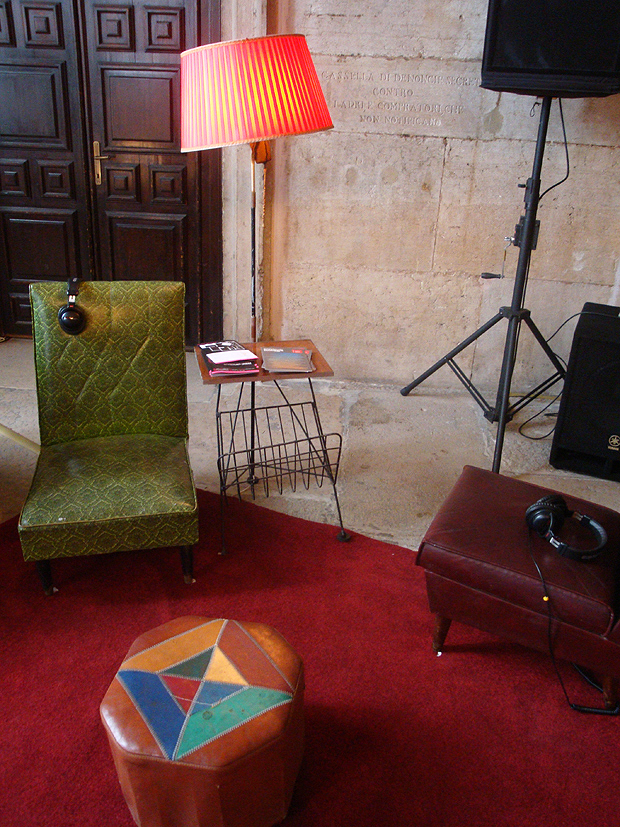 Sound bar library at Taiwan pavilion. Photo by Aditi Kulkarni. Venice Biennale 2011.
Sound bar library at Taiwan pavilion. Photo by Aditi Kulkarni. Venice Biennale 2011.
'I think the most important and uninvestigated architectural music-space of our time is the imaginary space made possible by the microphone...a space that does not exist in any form in any place in the everyday world.' (Ashley,r. 2009 cited in Hong-Kai Wang, 2011. p.17)
In her artist statement Hong Kai Wang quotes American avante-garde composer Robert Ashley, and I found these lines especially relevant. My aim is to transport the audience to Mumbai, my hometown and I agree that this relation between sound and essence of place, though immensely powerful is often ignored.
Reference: Hong-Kai Wang. (2011). Music While We Work. Venice: Palazzo Delle Prigioni. Notes: The Heard and the Unheard: Soundscape Taiwan. The Exhibition of theTaipei Fine Arts Museum of Taiwan. The Taipei Fine Arts Museum of Taiwan. Curator: Amy Cheng. Artists: Hong-Kai Wang Yu-Hsien Su.
Cracked Culture? Contemporary Chinese Art
Cracked Culture? The Quest for Identity in Contemporary Chinese Art. Curators: Wang Lin (China), Gloria Vallese (Italy). Organizer: Guangdong Museum of Art, China. Photos by Aditi Kulkarni.
Cracked Culture? The Quest for Identity in Contemporary Chinese Art. Curators: Wang Lin (China), Gloria Vallese (Italy). Organizer: Guangdong Museum of Art, China. Photos by Aditi Kulkarni.
 Jiao Xingtao. The Powerful Dragon. 258X38X170cm. Mixed Medium. 2011.
Jiao Xingtao. The Powerful Dragon. 258X38X170cm. Mixed Medium. 2011.
 Shi Jindian. Blue 750. Coloured Fibre in Stainless Steel. 260X170X120cm. 2008.
Shi Jindian. Blue 750. Coloured Fibre in Stainless Steel. 260X170X120cm. 2008.
Gao Yang. Jingzhe. Mixed Medium. 210X85cm. 2010.
Gao Yang. Mixed Medium 2011. Mixed Medium. 150X120cm. 2011.
 Ying Tianqi. Memory Loss. Mixed medium. 122X130cm. 2007.
Ying Tianqi. Memory Loss. Mixed medium. 122X130cm. 2007.
 Resi Girardello/ Vanas-Omnia Vincit Vanitas. Work with spun copper enameled in various colors and sizes, metal structure. 200X180X90cm. 2009.
Resi Girardello/ Vanas-Omnia Vincit Vanitas. Work with spun copper enameled in various colors and sizes, metal structure. 200X180X90cm. 2009.
 Ying Tianqi. Traces of the Vicissitudes. 2011.
Ying Tianqi. Traces of the Vicissitudes. 2011.
Ying Tianqi Resurrects the Life of Yore in the Old City on the Spot: "In China, when the bulldozers were marching like an army across the ancient city of Wuhu where I spent my childhood. I determined to shoot the record of this dramatic change with my video camera. Before the old city was demolished, I set my video camera at a sport shooting a street of neibhourhood and the life of a household from dawn till midnight for 12 hours. The same day a year later, that place had turned to ruins, and I played the video on the spot showing the life of people there a year before, both times of which happened to be the Chinese Dragon Boat Festival."
Laundry Room City
![]() Participants: Michael Moore, Samantha Else, Baran Saragul, Rina Miyake, Ben O'Shea, Taro Morimoto, Yi Lu, Tanya and me.
Photos by Samantha Else and me. Paper-mache dolls and houses by Yi Lu. Video and installation set-up by Aditi Kulkarni.
Participants: Michael Moore, Samantha Else, Baran Saragul, Rina Miyake, Ben O'Shea, Taro Morimoto, Yi Lu, Tanya and me.
Photos by Samantha Else and me. Paper-mache dolls and houses by Yi Lu. Video and installation set-up by Aditi Kulkarni.
Since I live in a building full of artists, I decided to invite everyone to one of my spontaneous experiments with the Mumbai videos. Using objects I found in the laundry room such as pieces of thermocol, cardboard boxes, chairs, clothespins and piles of yellow pages I created a crowded, urban space. No sound was used since I couldn't find speakers. After the first thirty minutes of discussion and feedback, people started adding and subtracting to the work, literally "playing" with the objects I had collected and even adding their own. Overall it was exciting since I felt it was relevant to the process of literally "building" a city which is unplanned and crowded like Mumbai, filled with so many different people. Eventually Yi Lu added her own work to the installation; fantasy objects such as houses and dolls made of paper-mache.
This event lead to the collaborative work Tobari no Akari by Taro Morimoto, Yi Lu and me. It also formed the base for my later experimentation with City Memories. Sam and Michael came up with the suggestion to use lego, which lead to Lego city #1.
Installations & Inspiration
Gerry Judah Paintings.
Fire with Fire (2010) by Isabelle Hayeur 3 channels video installation. Video projection of 15 minutes playing in continuous loop. 3 Blu-ray players, 3 video projectors. 112 West Hastings Street, Vancouver. Fire with Fire has been commissioned by The Vancouver 2010 Cultural Olympiad. Curator : Marlene Madison.
Rosa Barbara at Tate Modern. Article about the work here.
Show Homes and Display Desire (2007) by Vesna Pavlović. "Within the “Display, Desire” installation, the prints simultaneously function as images of display and display of images. Strange details of the American home are exposed, through the language of cinema and mechanisms of projection. The projection of black and white transparencies onto semi-transparent Plexiglas screens suggest the plastic quality of the interiors, and within the overlapping projection spaces, the images transform, exploring possible representations of the photographic medium itself."
Art Direction & Visuals: Deniz Kader – Candaş Şişman, Music & Sound Design: Görkem Şen, Project Management: Erdem Dilbaz, Modelling: Gökhan Uzun – Can Dinlenmiş (prospektif.org)
JR's (French Street Artist) TED Prize Wish: Use Art to turn the world Inside Out.
Peer Critique
We organized a peer critique for the 14th of December to discuss our work. At this point most people are midway through their projects. About 12-15 part-time and full-time MA students attended the workshop. I presented a video and photographs from a recent installation test. Here are some points of reaction to my work: > Simple, yet effective
> Interactive without the use of very complex technology. Since the user is essential to viewing the artwork.
> Use of technology is secondary to the concept.
> Prefer to see it projected on walls, instead of floor since it's more natural.
> Want to see more animation: people, events, day changing to night.
> Want to see a more dramatic difference between the two skylines.
> One person interpreted the "real" city as a doomsday city since it contains images of poverty and burning buildings.
> Important to note how most people who view the work generalize it to any city rather that Mumbai, unless specifically told.
> Prefer the rough sketchy version of the city.
> Almost a film.
Overall, I realized how different each person's work and philosophy was, from Fine Art to Animation finding common ground is not easy since its like each person is from different planets. At the same time it was useful to see how a fine artist or animator would react to my work. Additionally, various topics such as self-reflexive films, and the "axiomatic" were discussed. I also discovered a piece of work which later became vital to my understanding of my practice. It is called Circle of Confusion by Joana Hadjithomas and Khalil Joreige, 1997. See my notes on this work here.

